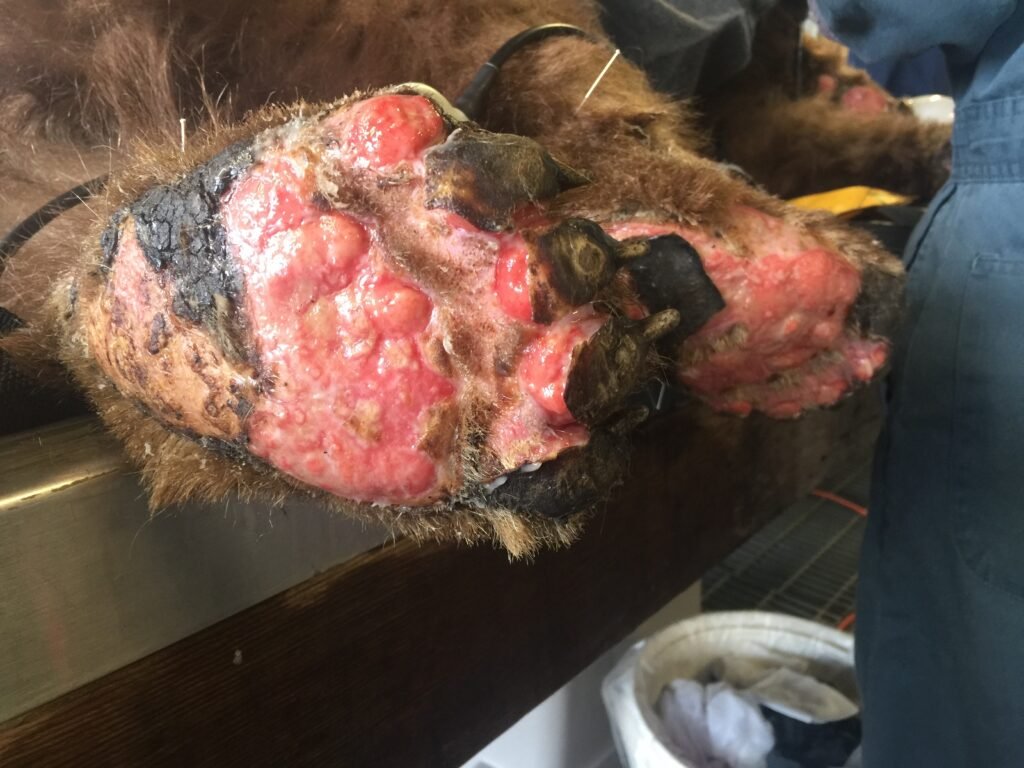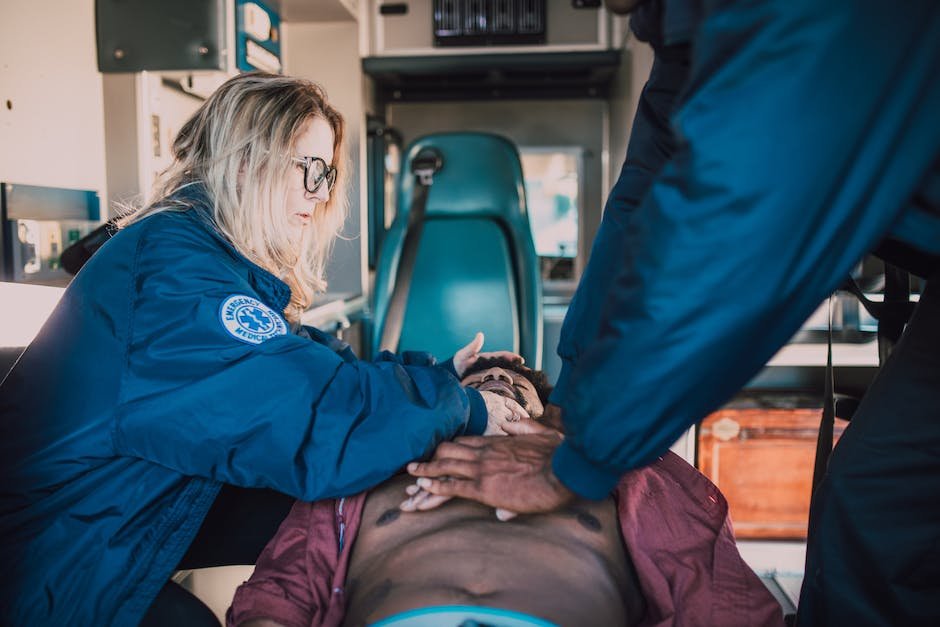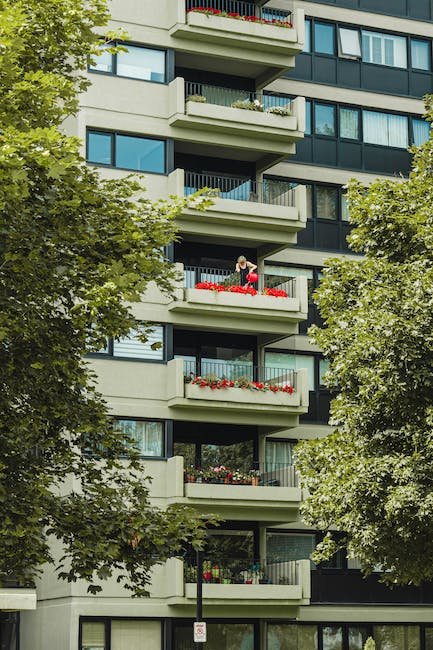Now Reading: How to Treat Heat Stroke and Heat Exhaustion
-
01
How to Treat Heat Stroke and Heat Exhaustion

How to Treat Heat Stroke and Heat Exhaustion
With the sun’s rays spilling endlessly onto our weary planet, summer is a tantalizing blend of golden days and warm evenings. But amidst the enchantment of this glorious season lies a hidden threat, lurking shyly on the sidelines – the menace known as heat stroke and heat exhaustion. As the mercury soars and human bodies simmer in sweltering temperatures, it becomes crucial to equip ourselves with the knowledge and skills to combat these deadly conditions. From sizzling sunburns to pulsating headaches, this article unravels the mysteries of heat stroke and heat exhaustion, unveiling an arsenal of strategies to keep those merciless summer days from turning into a realm of unbearable torment. So, whether you find yourself basking in sun-kissed fields or valiantly navigating the asphalt jungles of the urban world, let us dive into the depths of understanding, as we learn how to masterfully treat the twin demons of heat stroke and heat exhaustion.
Table of Contents
- Understanding Heat Stroke and Heat Exhaustion: Symptoms, Causes, and Risk Factors
- Preventing Heat Stroke and Heat Exhaustion: Tips for Staying Safe in Hot Weather
- First Aid for Heat Stroke and Heat Exhaustion: Immediate Actions and Emergency Response
- Recovering from Heat Stroke and Heat Exhaustion: Rest, Hydration, and Seeking Medical Help if Necessary
- Long-Term Strategies for Preventing Heat-Related Illnesses: Hydration, Proper Clothing, and Acclimatization
- Q&A
- Closing Remarks

Understanding Heat Stroke and Heat Exhaustion: Symptoms, Causes, and Risk Factors
Heat stroke and heat exhaustion are serious conditions that can occur when the body’s normal cooling mechanisms become overwhelmed by high temperatures. It’s essential to understand the symptoms, causes, and risk factors associated with these conditions to prevent complications and provide timely medical assistance.
Symptoms of heat stroke include a high body temperature, typically above 103°F (39.4°C), accompanied by hot, dry skin and a rapid heart rate. Other signs may include dizziness, nausea, headache, confusion, and even loss of consciousness. On the other hand, heat exhaustion is characterized by heavy sweating, cool and clammy skin, weakness, fatigue, and a rapid but weak pulse. Both conditions require prompt medical attention.
Several factors can contribute to heat stroke and heat exhaustion, including prolonged exposure to high temperatures, particularly in humid conditions. Engaging in strenuous physical activity, especially in hot environments, can also increase the risk of these conditions. Certain individuals, such as the elderly, infants, individuals with chronic illnesses, and those on certain medications, are at a higher risk of developing heat stroke or heat exhaustion.
To mitigate the risk of heat stroke and heat exhaustion, it is important to stay hydrated by drinking plenty of fluids and avoid excessive alcohol and caffeine consumption. Wearing lightweight, loose-fitting clothing, and using sun protection measures like hats and sunscreen can also help. Seek shade or an air-conditioned environment whenever possible, and be mindful of the symptoms if working or exercising in high temperatures. Remember, prevention is key in avoiding these potentially life-threatening conditions. Stay cool, stay safe!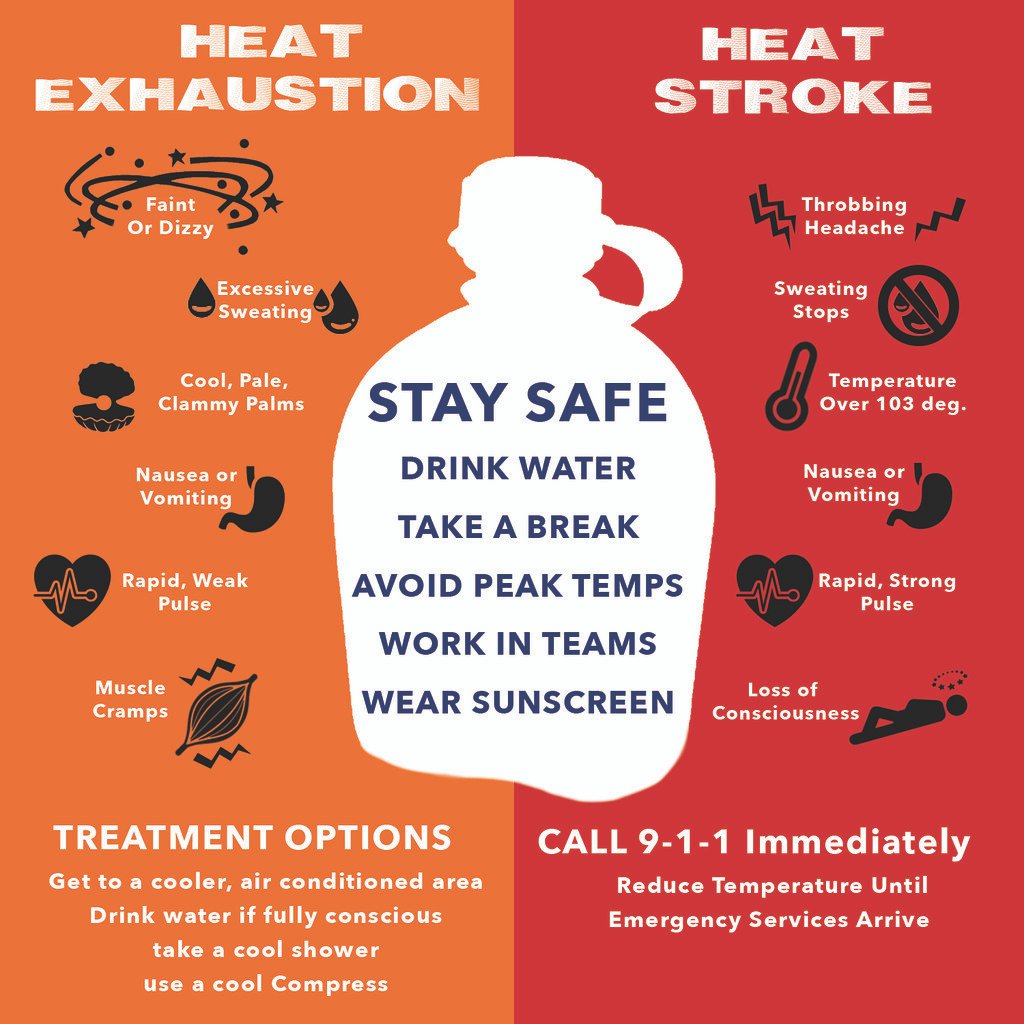
Preventing Heat Stroke and Heat Exhaustion: Tips for Staying Safe in Hot Weather
Preventing Heat Stroke and Heat Exhaustion
As the scorching heat of summer takes hold, it’s essential to take precautions to protect yourself from heat-related illnesses like heat stroke and heat exhaustion. Here are some valuable tips to ensure you stay safe and beat the heat:
- Stay hydrated: Drink plenty of water throughout the day, even if you don’t feel thirsty. Avoid sugary drinks and alcohol, as they can contribute to dehydration.
- Avoid direct sunlight: Seek shade whenever possible, especially during the hottest parts of the day. If you must be outside, wear lightweight and loose-fitting clothing that provides proper ventilation.
- Take frequent breaks: If you’re engaged in strenuous physical activity, be sure to take regular breaks in a cool and shaded area. Overexertion in extreme heat can be dangerous.
- Know the signs: Familiarize yourself with the symptoms of heat stroke and heat exhaustion. These include dizziness, rapid heartbeat, headache, confusion, nausea, and excessive sweating or lack thereof. If you or someone around you experiences these symptoms, seek immediate medical attention.
- Use protective measures: Apply sunscreen with a high sun protection factor (SPF) to prevent sunburns and minimize the risk of overheating. Additionally, wear a hat, sunglasses, and apply lip balm with SPF to safeguard yourself from the sun’s harmful rays.
By following these precautions, you can enjoy the summer days without succumbing to the dangerous heat. Remember, your health and well-being should always be a priority!
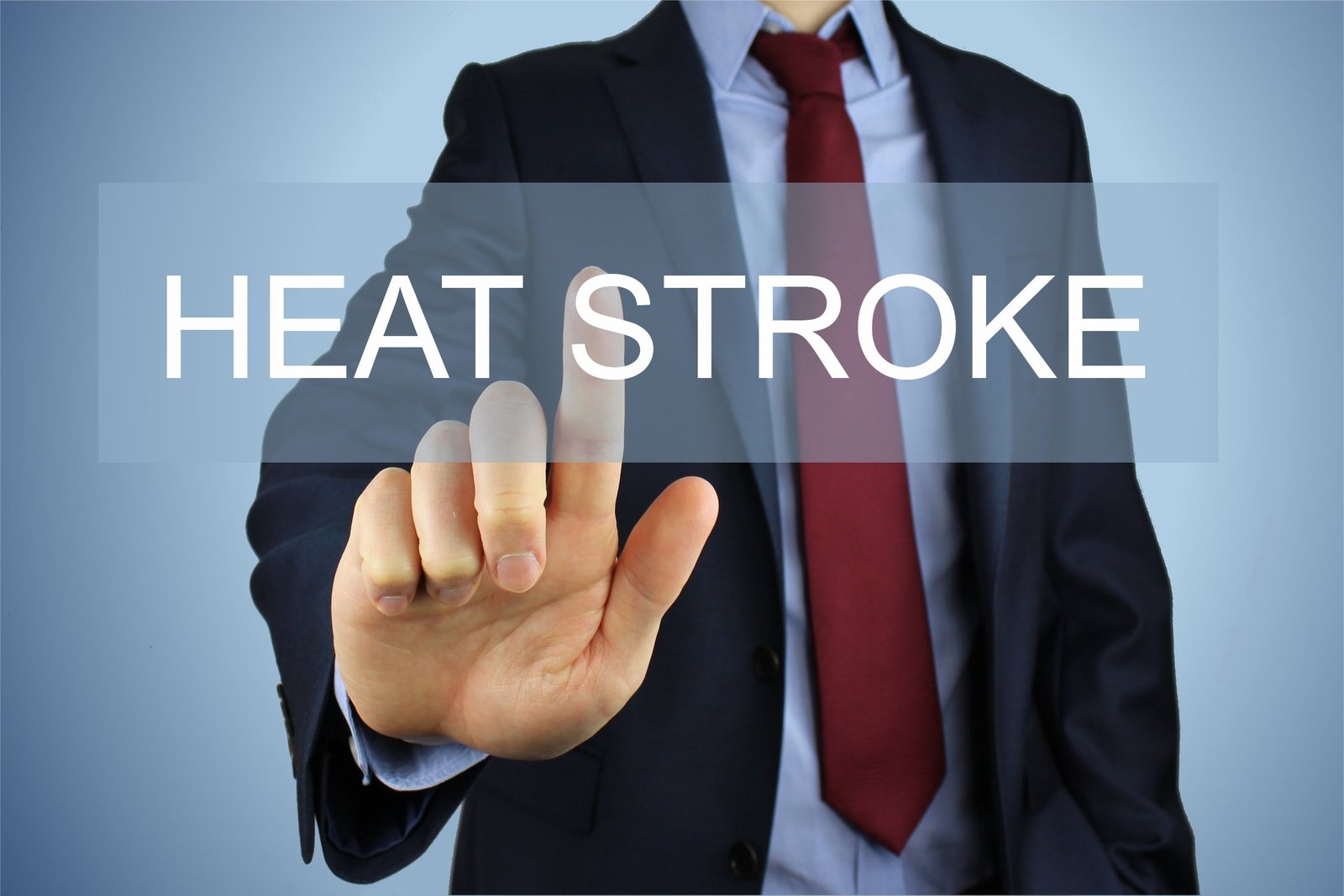
First Aid for Heat Stroke and Heat Exhaustion: Immediate Actions and Emergency Response
When faced with a heat stroke or heat exhaustion, immediate response is crucial to ensure the affected individual’s safety and well-being. Here are some essential steps to follow:
- Get to a cooler location: It’s essential to move the person to a shaded or air-conditioned area as soon as possible. Escaping the heat will help lower their body temperature and prevent further damage.
- Call for emergency assistance: If the person is displaying symptoms of heat stroke, such as confusion, dizziness, or seizures, it’s crucial to call emergency services right away. Time is of the essence in cases of heat-related illnesses.
- Cool the person down: While waiting for medical help to arrive, you can begin the cooling process. Apply cold, wet towels to their body or use a spray bottle to mist them with cool water. Fan their skin to facilitate evaporative cooling.
- Encourage hydration: If the affected person is conscious and able to swallow, offer them cool, non-alcoholic beverages to help rehydrate their body. However, avoid drinks with caffeine or excessive sugar content.
- Monitor vital signs: Keep a close eye on the person’s condition. Check their pulse, breathing rate, and level of consciousness regularly. This information will be vital when medical professionals arrive to provide further treatment.
Remember, heat stroke and heat exhaustion are serious conditions that require immediate medical attention. Acting promptly and providing necessary aid can significantly increase the chances of a positive outcome.
Recovering from Heat Stroke and Heat Exhaustion: Rest, Hydration, and Seeking Medical Help if Necessary
When it comes to recovering from heat stroke and heat exhaustion, it’s important to prioritize rest, hydration, and seek medical help if necessary. Here are some steps you can take to aid your recovery:
- Rest: Give your body the time it needs to recover by resting in a cool and shaded environment. Avoid any strenuous activities that can further strain your body.
- Hydration: Proper hydration is vital in replenishing the fluids lost during heat stroke or heat exhaustion. Drink plenty of water and avoid alcoholic beverages and caffeine, as they can worsen dehydration.
- Cooling measures: Utilize cooling measures to bring down your body temperature. Apply cold compresses to your forehead, neck, and armpits. Take a cool bath or shower if you feel up to it.
- Monitor your symptoms: Pay attention to any lingering symptoms, such as headache, nausea, dizziness, or confusion. If these symptoms worsen or if you experience shortness of breath or chest pain, it’s imperative to seek immediate medical help.
- Prevent future occurrences: Once you have recovered, take precautions to prevent heat-related illnesses in the future. Stay hydrated, avoid prolonged exposure to extreme temperatures, and wear appropriate clothing.
Remember, recovering from heat stroke and heat exhaustion requires both patience and self-care. By following these guidelines and seeking medical help if necessary, you can ensure a full and healthy recovery.
Long-Term Strategies for Preventing Heat-Related Illnesses: Hydration, Proper Clothing, and Acclimatization
Hydration: Staying hydrated is crucial in preventing heat-related illnesses. Make sure to drink plenty of fluids throughout the day, especially water, to replenish the body’s lost electrolytes. Don’t wait until you’re thirsty to drink, as thirst is an indication that you’re already dehydrated. Consider carrying a reusable water bottle with you at all times as a reminder to keep sipping on water.
Proper Clothing: Wearing the right clothing can significantly help in reducing your risk of heat-related ailments. Opt for loose-fitting, lightweight, and light-colored garments that allow better airflow and reflect sunlight. Additionally, consider wearing a wide-brimmed hat to protect your face and neck and choose sunglasses with UV protection to shield your eyes from the sun’s harmful rays.
Acclimatization: When dealing with extreme heat, it’s important to gradually acclimate your body to the conditions. Start by spending short periods of time outdoors, gradually increasing the duration over a few days. This helps your body adapt to the heat more effectively. If possible, try to schedule outdoor activities during cooler hours, such as early mornings or late evenings, to avoid the hottest part of the day. Remember, your body needs time to adjust, so be patient and listen to its signals.
Q&A
What is the difference between heat stroke and heat exhaustion?
Heat stroke is a severe medical condition where the body’s ability to regulate temperature fails, leading to a dangerously high body temperature. Heat exhaustion, on the other hand, is a milder condition caused by dehydration and prolonged exposure to heat.
What are the common symptoms of heat stroke?
Common symptoms of heat stroke include a high body temperature, hot and dry skin, rapid heartbeat, confusion, dizziness, and even loss of consciousness. It is a medical emergency and requires immediate treatment.
How can I recognize heat exhaustion?
Heat exhaustion symptoms include heavy sweating, weakness, nausea, headache, and fainting. If you suspect heat exhaustion, you should move to a cooler place, drink plenty of fluids, and rest.
What is the first step in treating heat stroke?
The first step is to call emergency services. While waiting for help, move the person to a cooler area, remove excess clothing, and apply cool water or ice packs to lower their body temperature.
Are there any immediate actions to take for heat exhaustion?
For heat exhaustion, immediate actions include moving to a cool place, drinking cool water or a sports drink, and applying cool, wet cloths to the skin. Resting and avoiding any physical exertion is crucial.
How long does it take to recover from heat stroke?
Recovery from heat stroke can vary depending on the severity of the case. With proper medical treatment, it may take a few days to a couple of weeks to fully recover. Follow-up care and maintaining hydration are important during the recovery process.
Can heat stroke and heat exhaustion be prevented?
Yes, they can be prevented by staying hydrated, avoiding direct sun exposure during the hottest part of the day, wearing lightweight and loose-fitting clothing, and taking regular breaks in shaded or cooler areas. Additionally, it is important to never leave children or pets unattended in a vehicle, as this can lead to heat stroke and death.
Closing Remarks
As we conclude this journey through the sun-drenched plains of heat stroke and heat exhaustion, it’s important to remember that knowledge is our greatest weapon in combating the fiery grasp of these conditions. By staying informed, we can shield ourselves and those around us from the scorching rays that threaten to overpower our bodies.
Imagine a world where heat waves no longer wreak havoc upon our skin, where shade becomes an enchanted sanctuary and water our most prized elixir. This vision may feel like a distant mirage, but it can be our reality if we embrace the wisdom we have gained today.
Remember, prevention is the key to triumph in this sweltering battle. By practicing sun-safe habits and adopting protective measures, we can dance effortlessly with the sun, rather than enduring its wrath. Keep your body hydrated, seek shade when necessary, and dress in lightweight clothing that serenades your skin.
In this realm of knowledge, we have unraveled the mysteries of heat stroke and heat exhaustion, equipping ourselves with the tools to recognize and address them promptly. From recognizing the warning signs to implementing crucial cooling techniques, we are now masters of our own body’s preservation.
As this evanescent voyage reaches its end, we encourage you to share the lessons you have learned. Spread the message of sun safety like a glowing ember, enlightening the lives of friends, family, and strangers alike. Together, we can forge a future where the unforgiving grip of heat no longer chokes the serenity from our lives.
As the shadows lengthen and the sun begins its descent on this article, we part ways knowing that we are now armed with the knowledge to battle against the relentless heat. So, my dear reader, take this newfound wisdom, let it seep into your very being, and let it guide you towards a life that embraces the warmth of the sun while expertly avoiding its fiery perils.
As a final reminder, your health and safety are paramount, and should you encounter the harbingers of heat stroke and heat exhaustion, treat them with the same urgency and respect as the scorching sun demands. For it is in your hands that the power lies to extinguish the flames and reclaim your body’s equilibrium.
Farewell, brave reader, until we meet again beneath the sizzling sun or amidst the cool embrace of knowledge. The battle against heat stroke and heat exhaustion continues, and with your newfound understanding, victory is within reach. Stay cool, stay informed, and thrive amidst the heat that surrounds us all.
As an affiliate, my content may feature links to products I personally use and recommend. By taking action, like subscribing or making a purchase, you’ll be supporting my work and fueling my taco cravings at the same time. Win-win, right?
Want to read more? Check out our Affiliate Disclosure page.

